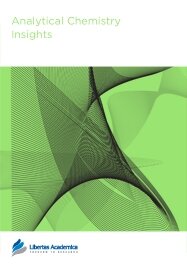

Publication Date: 18 Apr 2008
Journal: Analytical Chemistry Insights

Faculty of Pharmacy, King Abdulaziz University, Jeddah, Saudi Arabia
Abstract
A validated high-performance liquid chromatographic (HPLC) method for determination of phenytoin (PHN), para-hydroxy metabolite of phenytoin (POH) and sildenafil (SIL) in rabbit plasma is described. The method is based on extraction on Sep-Pak C18 solid support using ethylacetate and ether as eluents and monitoring at 220 nm. The extracted samples were analyzed by HPLC using Agilent Zorbax Extended C18 column (150 mm x 4.6 mm internal diameter) and isocratic elution with a mobile phase consist of 29% acetonitrile and 71% sodium acetate solution (0.02M, pH 4.6). The method was fully validated for linearity and range, selectivity, precision, stability, recovery, and robustness. The linearity of the method was in the range of 0.15 to 39 μg /ml for PHN and 0.15 to 33 μg/ml for both POH and SIL. Limits of detection (LOD) of PHN, POH, and SIL were 0.15±0.01, 0.15±0.01, and 0.15±0.01 μg/ml, respectively. The %recovery of PHN, POH, and SIL from rabbit plasma were, 101.88 ± 0.12, 99.16 ± 0.25, and 99.49 ± 0.33, respectively. The method was applied on plasma collected from rabbits different time intervals after receiving of 30 mg/kg PHN-Na with (and without) 8 mg/kg SIL citrate.
PDF (323.39 KB PDF FORMAT)
RIS citation (ENDNOTE, REFERENCE MANAGER, PROCITE, REFWORKS)
BibTex citation (BIBDESK, LATEX)

I have published more than thirty research papers in internationally reputed high impact factor journals including Libertas Academica publications, Proteomics Insights and Analytical Chemistry Insights. I have no hesitation in saying that Proteomics Insights is highly efficient for its rapid and high quality review process and keeping the authors informed at each stage of the publication process. I recommend this journal for students, teachers and research workers who wish to publish their work. ...

All authors are surveyed after their articles are published. Authors are asked to rate their experience in a variety of areas, and their responses help us to monitor our performance. Presented here are their responses in some key areas. No 'poor' or 'very poor' responses were received; these are represented in the 'other' category.See Our Results
Copyright © 2013 Libertas Academica Ltd (except open access articles and accompanying metadata and supplementary files.)
FacebookGoogle+Twitter
PinterestTumblrYouTube